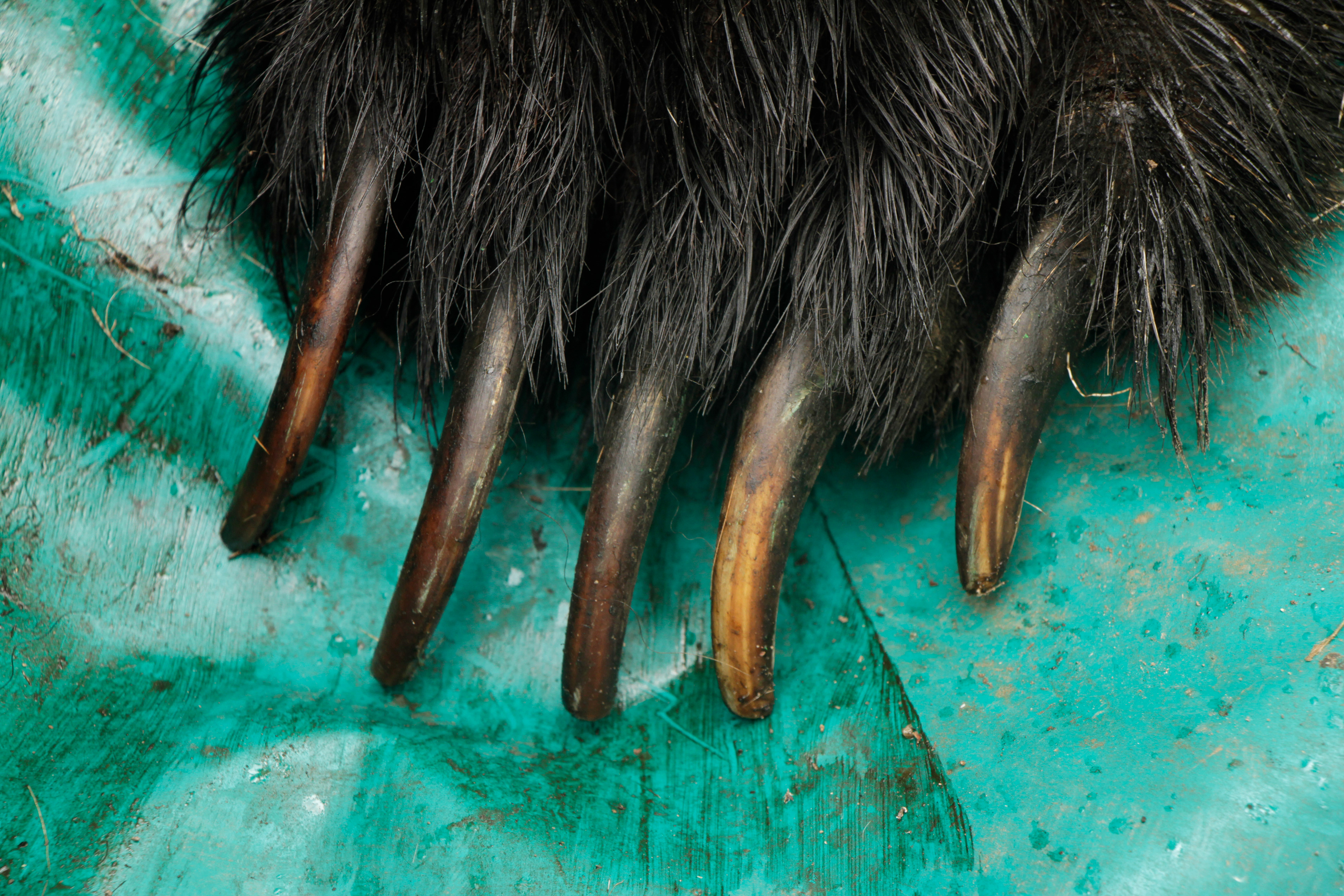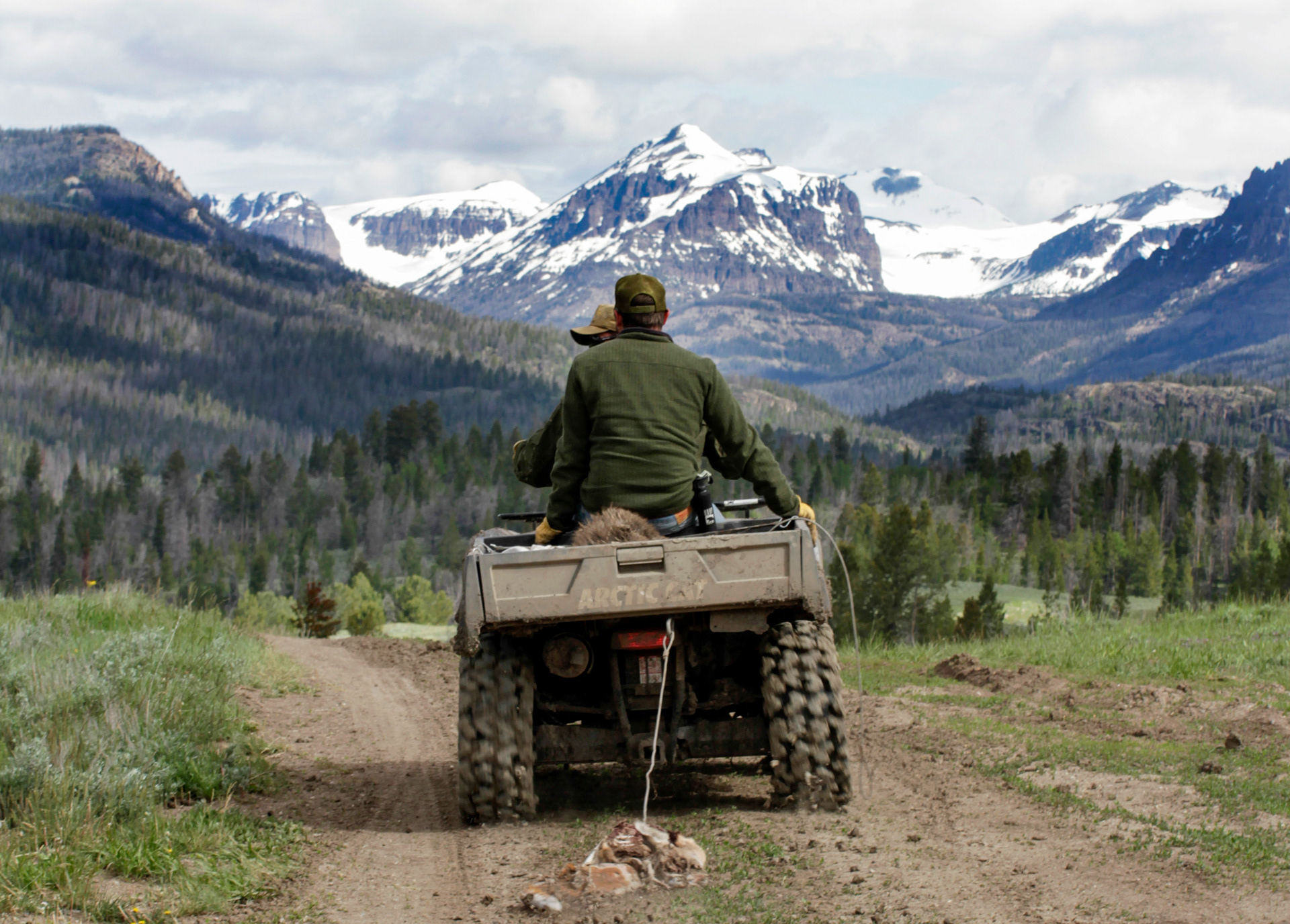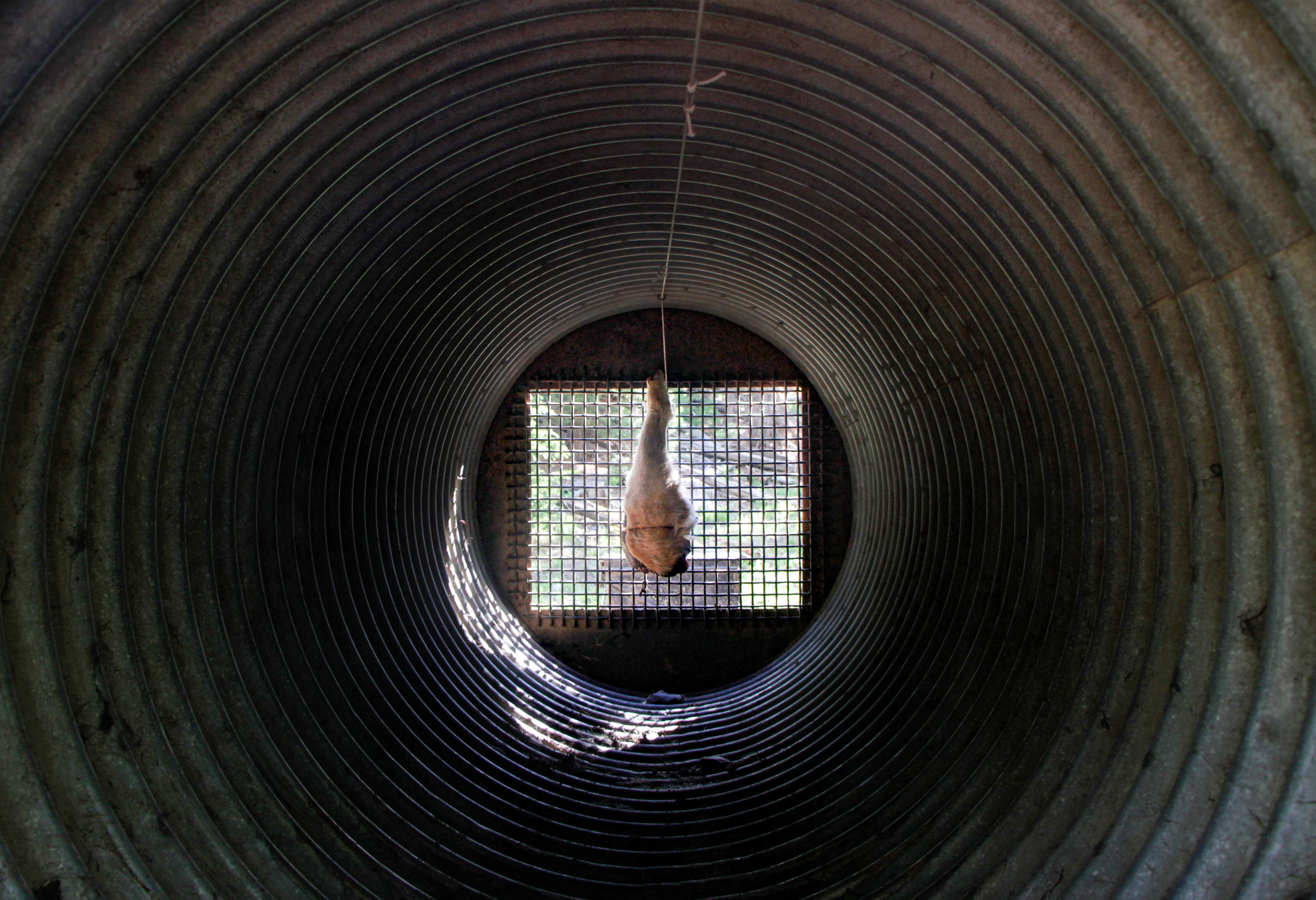
Ryan Kindermann, Justin Clapp, Clint Atkinson and Mike Ebinger take continuous heart rate, respiration and temperature measurements from a sedated 13-year-old male grizzly bear on June 16, 2017, in the Absaroka Mountains in Wyoming. Researchers with the Game and Fish Department use humane live traps to conduct population research on grizzlies around the state. Bears are monitored very closely throughout the process, and the animal's wellbeing is a main priority both during data collection and upon revival and release. An oxygen tank sits on standby in case the bear has trouble breathing.

The claws of a grizzly bear rest on a tarp while the bear is sedated.

Clint Atkinson inspects the bear's oral health and determines an approximate age from its teeth. This female was estimated to be eight years old.

Clint Atkinson and Ryan Kindermann take an ATV out to a trap site beyond truck-accessible roads. They dragged a portion of roadkill bait behind the vehicle to create a scent path to the site - another form of luring bears to the right area.

Bait in the form of a deer leg hangs at the back of a culvert trap at a second trap site. Roadkill is collected to use as bait so no excess wildlife is harmed in the process.

A male grizzly bear wakes up from sedation after the large carnivore team completed their data collection.

Branches obscure a snare trap newly set after a bear triggered the mechanism but managed to break free overnight.

Bears need to be weighed using a tarp and pulley system. It takes three team members to successfully lift the bear off the ground.

The large carnivore team takes measurements of a female grizzly.

Clint Atkinson and Ryan Kindermann monitor oxygen levels and heart rate of a female grizzly bear while fellow biologists conduct take physical measurements of the bear.

A clipboard holding charts sits partially filled out on the forest floor.

Justin Clapp watches patiently as the male grizzly makes its first signs of waking up from the sedative. The team will not leave the bear's sight until they watch it walk off on its own to ensure the safety of both the bear and anything that might be nearby. The slow process of revival is fairly predictable, so Clapp knew at what point he needed to move to safety in his truck to finish his watch.

Tools used by large carnivore biologists are laid out on a tarp at the research headquarters.













